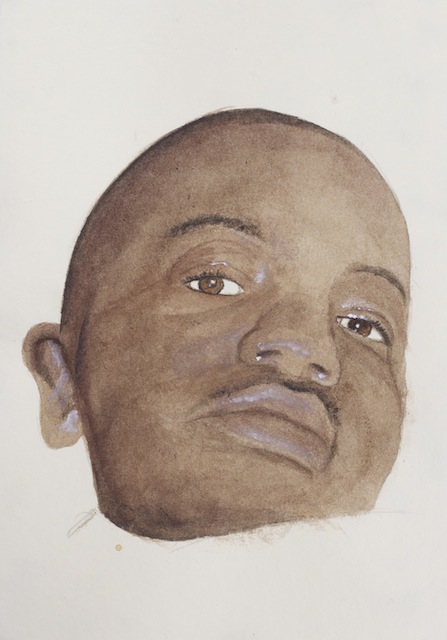You can find the archive of past events and announcements here.Hier vind je het archief van activiteiten en aankondigingen.
home-linkshome-links
Links
Procedures for complaints (also concerning undesirable behaviour)
Help and Care – Gerrit Rietveld Academie
FAQ – Gerrit Rietveld Academie
Links
Procedures for complaints (also concerning undesirable behaviour)
MOSSELDAG 2013MOSSELDAG 2013
TO ALL DOGTIME STUDENTS:
We start the new DOGtime year with the traditional MOSSELDINER on Friday 6 September 2013.
Diner starts at 18.30 hrs at the Rietveld pavilion – Rietveld Academie, Amsterdam.AAN ALLE DOGTIME STUDENTEN:
We beginnen het nieuwe DOGtime jaar met het traditionele MOSSEL diner op vrijdag 6 september 2013.
Diner begint op 18.30 bij het Rietveld paviljoen – Rietveld Academie, Amsterdam.
DOGTIME GRADUATION SHOW 2013DOGTIME GRADUATION SHOW 2013
Alexander SchierlAlexander Schierl
alexander@schierl.de, www.schierl.de
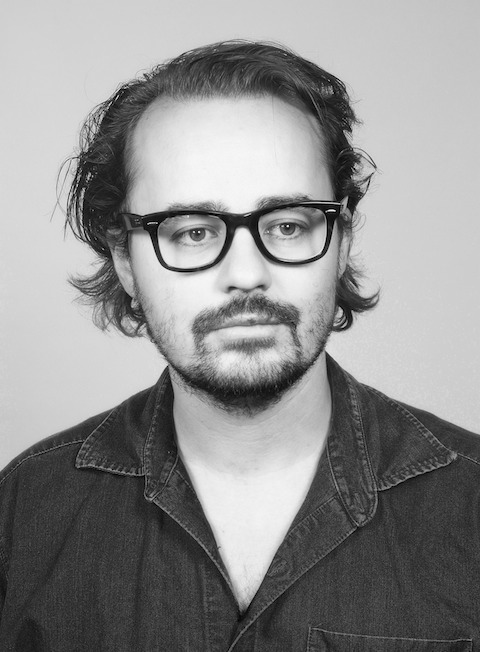
Title thesis:
MIN 4 AND MAX 13 WORDS: *TEXT*"
min 7, max 20 words: *language*
Subject:
And there you are — an infinitely original author of charming sensibility. You say: "This thought is mine." No, my brother, It is within you, nothing is ours. Everyone had it or will have it. No poet, no artist of any art, has his complete meaning alone. Textual instances, as writings and readings, seem to have been released from any definite authorial origin. The writer can only imitate. His only power is to mix writings. There is a fundamental link between language and robots. A writing machine that has been fed an instruction appropriate to the case could also devise an exact and unmistakable "personality" of an author. Understanding virtual texts tells us much about real texts and their creative core.
Link to thesis
"Alexander Schierl creates and utilises systems to investigate the notions of truth, time and the human role in technology. Schierl has created a very human system with technology."
— Carlaadams, Australia via fiverr.com: Iwill give you constructive feedback on your art for $5
“Instantly, the out of the box critical, analytical, simplistic approaches of his work provoke or more so grab the senses in ways forgotten or yet realised. Schierl will be an artist I will follow for as long as the Internet continues to work."
— Mrscribbles, Trinidad and Tobago via fiverr.com: I will critique any art piece and offer advice for $5
"Alexander’s art aims to spark an
illusion inside you for a short period
of time, but then quickly cancelling
it when the brain sees the truth."
— Danielzo, Rumania via fiverr.com: I will write a 350 word article on anything you want for $5
"I was eager to read every next line of it, every paragraph, his perspective cannot be any more true on speech and literature, how
vital it is to our survival, it was
amazing"
— lord_toror, USA via fiverr.com: I will critique your art / artwork for $5
"He looks at everyday things and experiments with them to get the viewer to experience and rethink a different way"
— yoru_no_uta, USA via fiverr.com: I will critique your movie, photograph, song, art piece, website, and the like for $5
“Alexander Schierl shares an inner knowledge of the human experience through an artist expression of the industrialisation of modern society. Combining images of abstract singular objects that reflect the loneliness of the human condition but with a humorous sentiment."
— Jmckew, USA via fiverr.com: I will provide a professional review of your art work for $5
"The relationship between art and advertising now seems richer and more complex than ever."
— michaelzigerlig, Switzerland via fiverr.com: I will draw You A Cartoon Comic Strip Or Panel for $5
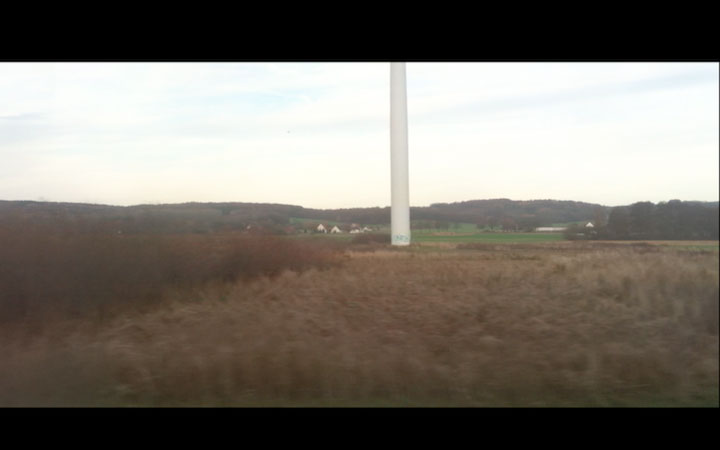
|
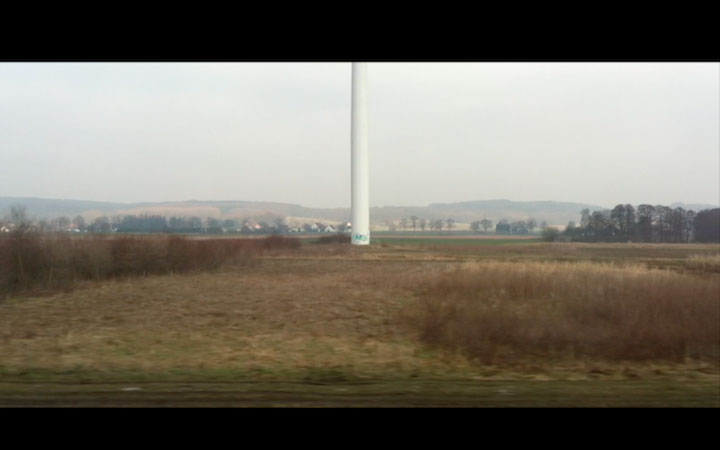
|
|
|
|
|
|
|
|
|
|
|
alexander@schierl.de, www.schierl.de

Title thesis:
MIN 4 AND MAX 13 WORDS: *TEXT*"
min 7, max 20 words: *language*
Subject:
And there you are — an infinitely original author of charming sensibility. You say: "This thought is mine." No, my brother, It is within you, nothing is ours. Everyone had it or will have it. No poet, no artist of any art, has his complete meaning alone. Textual instances, as writings and readings, seem to have been released from any definite authorial origin. The writer can only imitate. His only power is to mix writings. There is a fundamental link between language and robots. A writing machine that has been fed an instruction appropriate to the case could also devise an exact and unmistakable "personality" of an author. Understanding virtual texts tells us much about real texts and their creative core.
Link to thesis
"Alexander Schierl creates and utilises systems to investigate the notions of truth, time and the human role in technology. Schierl has created a very human system with technology."
— Carlaadams, Australia via fiverr.com: Iwill give you constructive feedback on your art for $5
“Instantly, the out of the box critical, analytical, simplistic approaches of his work provoke or more so grab the senses in ways forgotten or yet realised. Schierl will be an artist I will follow for as long as the Internet continues to work."
— Mrscribbles, Trinidad and Tobago via fiverr.com: I will critique any art piece and offer advice for $5
"Alexander’s art aims to spark an
illusion inside you for a short period
of time, but then quickly cancelling
it when the brain sees the truth."
— Danielzo, Rumania via fiverr.com: I will write a 350 word article on anything you want for $5
"I was eager to read every next line of it, every paragraph, his perspective cannot be any more true on speech and literature, how
vital it is to our survival, it was
amazing"
— lord_toror, USA via fiverr.com: I will critique your art / artwork for $5
"He looks at everyday things and experiments with them to get the viewer to experience and rethink a different way"
— yoru_no_uta, USA via fiverr.com: I will critique your movie, photograph, song, art piece, website, and the like for $5
“Alexander Schierl shares an inner knowledge of the human experience through an artist expression of the industrialisation of modern society. Combining images of abstract singular objects that reflect the loneliness of the human condition but with a humorous sentiment."
— Jmckew, USA via fiverr.com: I will provide a professional review of your art work for $5
"The relationship between art and advertising now seems richer and more complex than ever."
— michaelzigerlig, Switzerland via fiverr.com: I will draw You A Cartoon Comic Strip Or Panel for $5

|

|
|
|
|
|
|
|
|
|
|
|
Alexander KraemerAlexander Kraemer
info@ak83.nl, www.AK83.NL
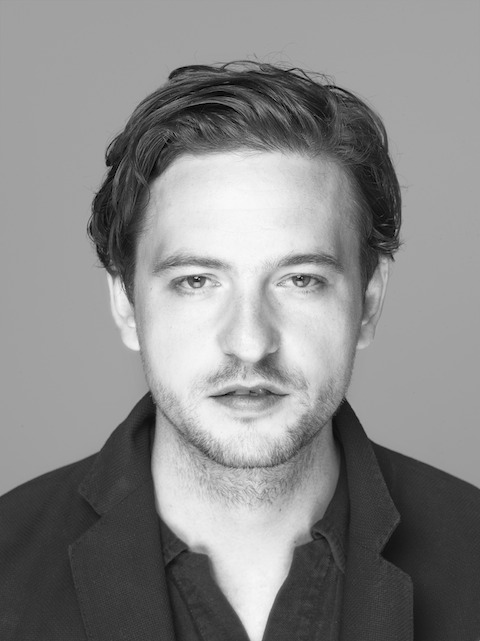
Title thesis:
The Becoming of Author of Space
How does the model of authorship function in digital media spaces compared to traditional media?
Subject:
My thesis is an investigation in the general dynamic between authorship (sending), spatial form (medium) and information (retrieval) and how this might work differently in todays’ computer culture. The assumption is that space is a medium; “just as other media types it can be instantly transmitted, stored and retrieved, compressed, reformatted, streamed, filtered, computed, programmed and interacted with. In other words, all operations which are possible with media as a result of its conversion to computer data can now also apply to (representations of) physical space.” The text asks in how far the creation and perception of such spacious media is different from traditional media forms and whether this difference may also affect the traditional author function of space in the end.
Having studied and worked for the past seven years in the field of architecture and the unstable media, I have always aimed
to achieve the convergence
of multimedia, urbanity and architecture; dealing with space and its perception in either virtual or reality. Within my work I aim to abolish the border between the physical and digital world – yet
at least blurring the transition between the two. I want to create seamless (interactive) experiences with physical space by overlaying it with digital, dynamically changing information. The result shall be
one coherent new medium that appears as a merging of physical and digital contents. Assuming that in the same way the digitalization of content in new media / web
2.0 applications had profound consequences on earlier media as print, music and video, so will the upcoming of spacious media also transform the urban sphere into an information layered, collaboratively shapable medium. Thus, the question appears, how will this new medium evolve and what is the impact on the relation between the author function of space and its audience?
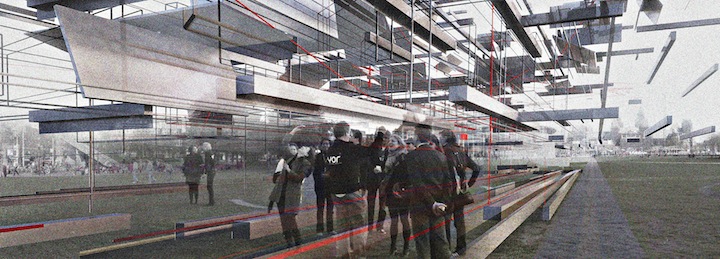 Raumstadt 2009 |
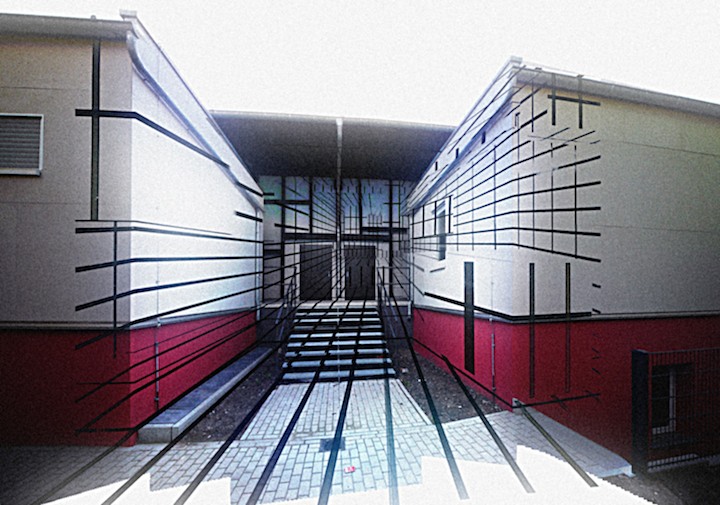 Raumstad Moers 2009 |
|
|
|
|
info@ak83.nl, www.AK83.NL

Title thesis:
The Becoming of Author of Space
How does the model of authorship function in digital media spaces compared to traditional media?
Subject:
My thesis is an investigation in the general dynamic between authorship (sending), spatial form (medium) and information (retrieval) and how this might work differently in todays’ computer culture. The assumption is that space is a medium; “just as other media types it can be instantly transmitted, stored and retrieved, compressed, reformatted, streamed, filtered, computed, programmed and interacted with. In other words, all operations which are possible with media as a result of its conversion to computer data can now also apply to (representations of) physical space.” The text asks in how far the creation and perception of such spacious media is different from traditional media forms and whether this difference may also affect the traditional author function of space in the end.
Having studied and worked for the past seven years in the field of architecture and the unstable media, I have always aimed
to achieve the convergence
of multimedia, urbanity and architecture; dealing with space and its perception in either virtual or reality. Within my work I aim to abolish the border between the physical and digital world – yet
at least blurring the transition between the two. I want to create seamless (interactive) experiences with physical space by overlaying it with digital, dynamically changing information. The result shall be
one coherent new medium that appears as a merging of physical and digital contents. Assuming that in the same way the digitalization of content in new media / web
2.0 applications had profound consequences on earlier media as print, music and video, so will the upcoming of spacious media also transform the urban sphere into an information layered, collaboratively shapable medium. Thus, the question appears, how will this new medium evolve and what is the impact on the relation between the author function of space and its audience?
 Raumstadt 2009 |
 Raumstad Moers 2009 |
|
|
|
|
Gosia KaczmarekGosia Kaczmarek
goshek@gmail.com, www.gosiakaczmarek.com
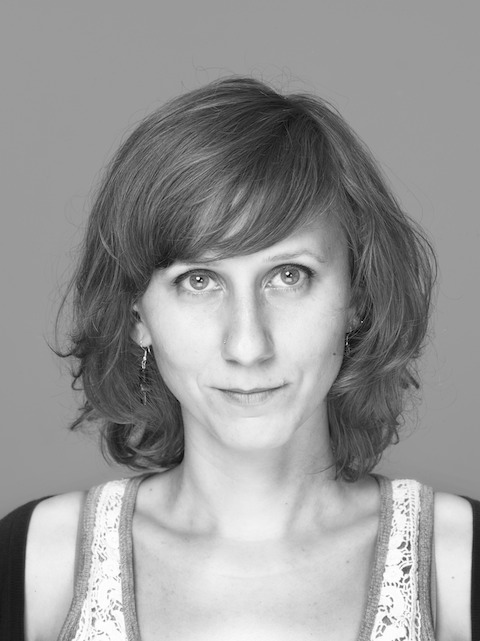
Title thesis:
Un_design of dis_trust.
The tactical sensitization to emancipate.
Subject:
The objective of my thesis is to peruse design as practice on a grid of social interaction. With notions
of suspicion and dis_trust I want to describe a phenomenon of design, where these basic individual affections, pivotal to any sort of action, became the lenses through which I discover an importance
and meaning of design. It became for me the password to the domain of perceiving and somatic; it opened up a discovery of workings and meanings of the “media” and simultaneously, to the elementary workings of reality. Where intertwining of art and design takes place and concurrently ethics, sociology, psychology and politics are all brought into view.
Link to thesis (PDF)
Let’s necessitate the re-cognition for integral and individual sensitivity of our body-action and concurrently the re-cognition for action of the social body-context!
I locate my work between the domain of fine arts and design. I research the old artistic domain of the perception. My experiments in the art field focus on the analysis of 'the relations' within the frame of: context, contact and content.
I am interested in the process of subjectivization by objects and the conditions they create. I wish to
mobilize recipients through my work by putting them in certain positions where they can be confronted with themselves. I want participants
to be more sensitive towards
their own experiences (the body- emotion-thought paradigm) which is grounded in their surroundings. I want them to be more sensitive to how the individual and social are both co_active and reciprocal.
I research design_art practices and the philosophical inquiry where the tactical approaches to the domain of the dis_trust-suspicion becomes crucial.
 Perceiving devices. Un_design of dis_trust. |
goshek@gmail.com, www.gosiakaczmarek.com

Title thesis:
Un_design of dis_trust.
The tactical sensitization to emancipate.
Subject:
The objective of my thesis is to peruse design as practice on a grid of social interaction. With notions
of suspicion and dis_trust I want to describe a phenomenon of design, where these basic individual affections, pivotal to any sort of action, became the lenses through which I discover an importance
and meaning of design. It became for me the password to the domain of perceiving and somatic; it opened up a discovery of workings and meanings of the “media” and simultaneously, to the elementary workings of reality. Where intertwining of art and design takes place and concurrently ethics, sociology, psychology and politics are all brought into view.
Link to thesis (PDF)
Let’s necessitate the re-cognition for integral and individual sensitivity of our body-action and concurrently the re-cognition for action of the social body-context!
I locate my work between the domain of fine arts and design. I research the old artistic domain of the perception. My experiments in the art field focus on the analysis of 'the relations' within the frame of: context, contact and content.
I am interested in the process of subjectivization by objects and the conditions they create. I wish to
mobilize recipients through my work by putting them in certain positions where they can be confronted with themselves. I want participants
to be more sensitive towards
their own experiences (the body- emotion-thought paradigm) which is grounded in their surroundings. I want them to be more sensitive to how the individual and social are both co_active and reciprocal.
I research design_art practices and the philosophical inquiry where the tactical approaches to the domain of the dis_trust-suspicion becomes crucial.
 Perceiving devices. Un_design of dis_trust. |
Eugen GeorgEugen Georg
ugenee@gmail.com, www.eugenge.org, eugengeorg.blogspot.nl
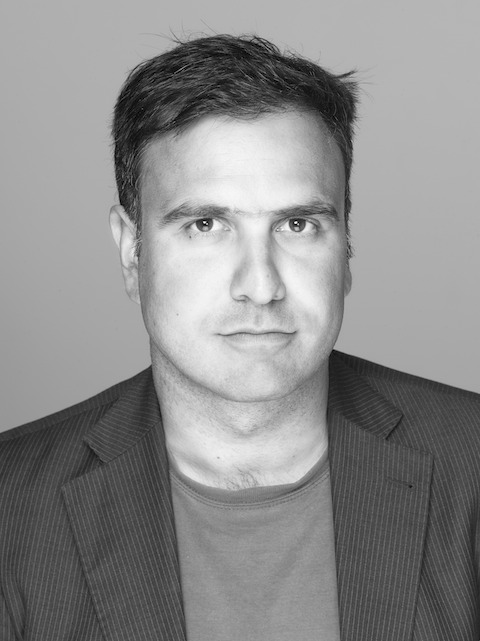
Title thesis:
Trying to fit into the context;
Subject:
The power of the 'Trying to Fit into the Context', the graduation thesis by Eugen Georg is its utter failure to conform.
It is not a matter of an 'angry young man’s’ take on this part of the graduation demands, as can be noted considering the title it is a true attempt to be as honest as he can in trying to comply and to conform to all the demands concerning, yet avoiding a double bind situation and hypocritical ‘solutions’. The line of flight he ventures takes you on board as his companian and accomplice on this kaleidoscopic, and paranoiac travel of the migrant, the outcast, being the incarnated example of the diaspora after the fall of the Soviet empire.
No gravitational or founding point of reference seems to be at hand, and the impossibility of defining this ‘context’ to which he is supposed to comply, is exactly the point, through the course of its ‘argument’, he demonstrates. With this Sisyphussian labour Georg seems to struggle to lift this personal (at some points even autobiographical) level to concerns that run through out the aporia’s and gridlock situations in contemporary practice and debate. The brave, concluding maxim that runs through his monolgues, dialogues and meta-logues is the notion :
‘We have to do everything again’, as the only possible way out of the tortured and besieged situation the arts are held captive in. This maxim combined with a more general understanding of the title, is is as if Georg not only points to art’s difficulty to reformulate its position, and context of workings, but also that we have to rebuild at root level art’s new emergence and legitimization.
Link to thesis (PDF)
For quite some time I sit between paper. In a sea of paper. In waves of copies. In a Life work. In front of me photos of the dead Ulrike Meinhof. Around me photos of dead Gudrun Ensslin and Rudi Dutschke.
I try to formulate this carefully. I don’t know what needs to happen so that something happens.
Make banking boring! The non- conformists, not the conformists are the ones who are pushing the consuming spiral further. All roads lead to the supermarket. Even undistinguishable products need to be made distinguishable. It is not capitalism that causes innovation but a certain type of people. I do create right now in full awareness what will later be obsolete. You
are successfull, because you are 68
successful. Something is cool because its called cool. We do not have a knowledge – but an implementation problem. Capitalism died in 2008. He would have collapsed completely if the states had not saved him. We are witnessing the dictatorship of hedonism and libertinage. Enjoy immediately. What if in time…
You did suffer, you did obey, but you also realised something! As
a migrant you might not only be interrested in the French Revolution but also in today’s mainstream culture. Ok, i am not sure about all this. That’s why we have to think about how the future capitalism should look like?!
… And, of course there will be Art!
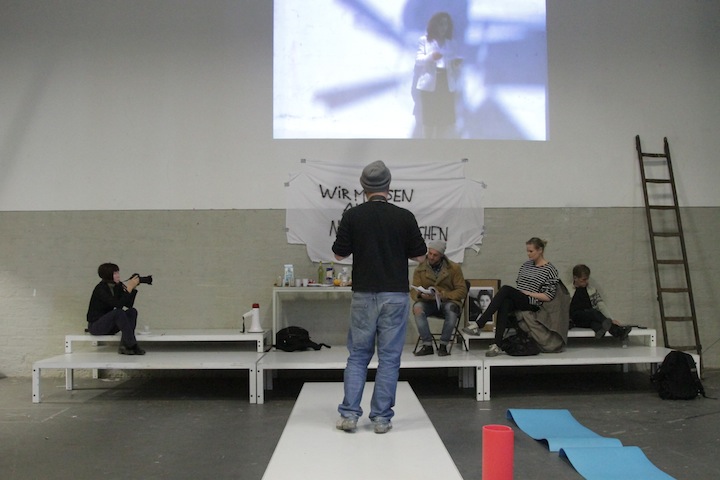 (* 21.05.1976 Baia Mare) / RO / DE / NL Film / Performance / Theater |
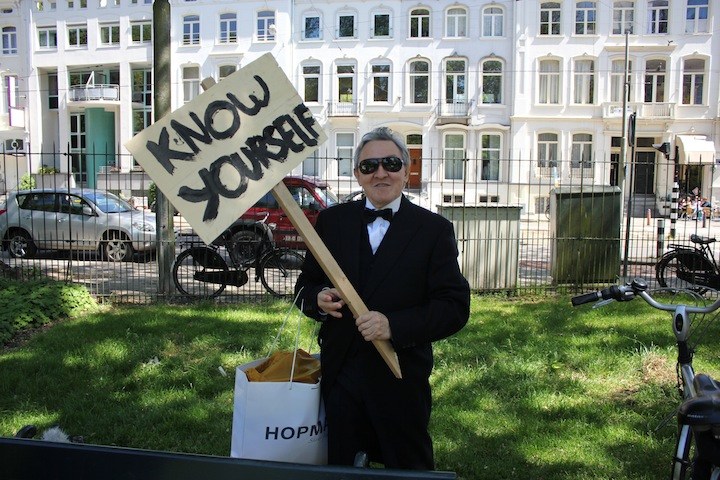 “The Consequence“ |
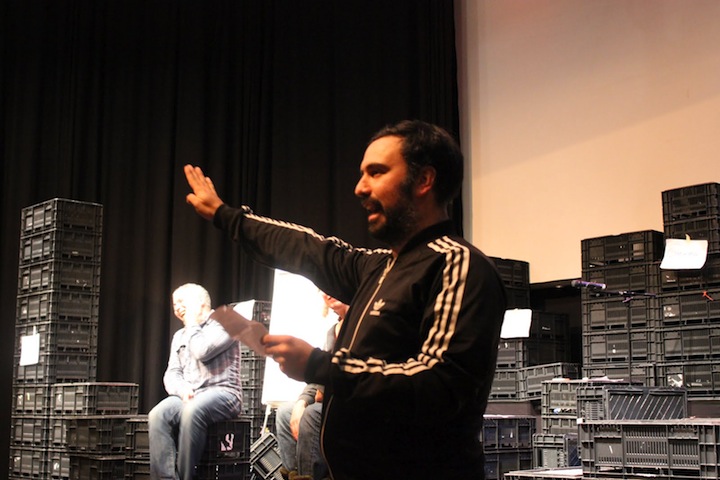 “Housing the social, social the housing” w/ Chato Delat? |
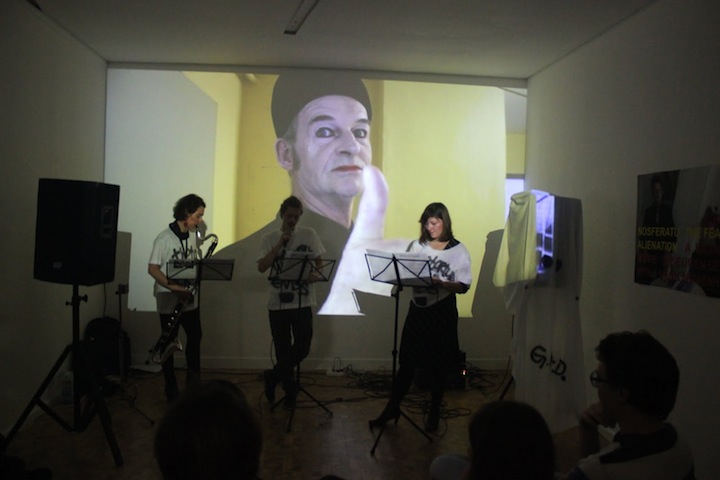 “Nosferatu the fear of Alienation“ |
ugenee@gmail.com, www.eugenge.org, eugengeorg.blogspot.nl

Title thesis:
Trying to fit into the context;
Subject:
The power of the 'Trying to Fit into the Context', the graduation thesis by Eugen Georg is its utter failure to conform.
It is not a matter of an 'angry young man’s’ take on this part of the graduation demands, as can be noted considering the title it is a true attempt to be as honest as he can in trying to comply and to conform to all the demands concerning, yet avoiding a double bind situation and hypocritical ‘solutions’. The line of flight he ventures takes you on board as his companian and accomplice on this kaleidoscopic, and paranoiac travel of the migrant, the outcast, being the incarnated example of the diaspora after the fall of the Soviet empire.
No gravitational or founding point of reference seems to be at hand, and the impossibility of defining this ‘context’ to which he is supposed to comply, is exactly the point, through the course of its ‘argument’, he demonstrates. With this Sisyphussian labour Georg seems to struggle to lift this personal (at some points even autobiographical) level to concerns that run through out the aporia’s and gridlock situations in contemporary practice and debate. The brave, concluding maxim that runs through his monolgues, dialogues and meta-logues is the notion :
‘We have to do everything again’, as the only possible way out of the tortured and besieged situation the arts are held captive in. This maxim combined with a more general understanding of the title, is is as if Georg not only points to art’s difficulty to reformulate its position, and context of workings, but also that we have to rebuild at root level art’s new emergence and legitimization.
Link to thesis (PDF)
For quite some time I sit between paper. In a sea of paper. In waves of copies. In a Life work. In front of me photos of the dead Ulrike Meinhof. Around me photos of dead Gudrun Ensslin and Rudi Dutschke.
I try to formulate this carefully. I don’t know what needs to happen so that something happens.
Make banking boring! The non- conformists, not the conformists are the ones who are pushing the consuming spiral further. All roads lead to the supermarket. Even undistinguishable products need to be made distinguishable. It is not capitalism that causes innovation but a certain type of people. I do create right now in full awareness what will later be obsolete. You
are successfull, because you are 68
successful. Something is cool because its called cool. We do not have a knowledge – but an implementation problem. Capitalism died in 2008. He would have collapsed completely if the states had not saved him. We are witnessing the dictatorship of hedonism and libertinage. Enjoy immediately. What if in time…
You did suffer, you did obey, but you also realised something! As
a migrant you might not only be interrested in the French Revolution but also in today’s mainstream culture. Ok, i am not sure about all this. That’s why we have to think about how the future capitalism should look like?!
… And, of course there will be Art!
 (* 21.05.1976 Baia Mare) / RO / DE / NL Film / Performance / Theater |
 “The Consequence“ |
 “Housing the social, social the housing” w/ Chato Delat? |
 “Nosferatu the fear of Alienation“ |
IDUMIDUM
Interaction Design Unstable Media
NOT A PALIMPSEST
In thinking about a description of the process that a students undergoes when following an educational course, like ours of five consecutive years, it could be compared with the re-writing that is done on a palimpsest. The old text, that once coded the student is scrapped from its ground, and when that ground is sufficiently cleansed,
the surface is filled with a re-writing, that may be totally opposed to the code that was there before. The educational institute then is the factory, the prison, the correctional institute that scrapes away the identity of the person,
and recomposes it anew with a new text, a new code (of thinking and conduct). In this version of education the act of learning then is a fundamental re-coding of the student. The only hope then is that some traces of earlier texts can still be deciphered, as is the case with the classical examples of palimpsests. (e.g. the Codex Ephraemi Rescriptus).
Over the years I have seen students change during their study at DOGtime. I cannot deny that, yet I hope that it was not due to the machinic logic mentioned above. For,
it would be a rather gruesome way of reformatting people as if they were considered to be merely a hard disc of a computer that needed a new, updated Operating System (a new form of the palimpsest, only without the traces of the former texts). It would be the act of the undoing of history, of destroying time having had its singular effect on the formation of an identity. If this would be the case, the student would have been rid of the capacity to construct, even momentarily, a view on his/hers own trajectory of learning, and thus on his/hers understanding of how to learn.
Within DOGtime we do our best to refrain from this type of the re-formatting of students. It would imply that we would have such a text, a code to overwrite an old one. That text is missing as long as we teach at DOGtime. How then to explain for the changes of the students that have followed the course?
Apart from the simple observation that people change overtime, maybe at DOGtime the students are more prone to change, even to the point where transformation becomes chronic. Why so? Perhaps it is because when you are invited to closely examine something, you cannot help to note the inherent changes that manifest themselves in a permanent flux. Experience always invents, and every perception is a creative activity culminating in the production of an event of change.
This year’s graduation candidates of IDUM show in a
rich diversity of approaches work that demonstrates and showcases a transformational ability. Gosia Kaczmarek in her work let you experience the transitional zone of medial attention that scrapes against the perception of real, bodily life. A infra mince zone that in its instability oscillates between different perceptual registers, and invites the participant of the work to interact with this unsettling condition and re-sensitize him/herself with this new perceptual paradigm. Eugen Georg in his post-dramatic theatre piece reaches a similar instability by actively deconstructing the traditional frames and suppositions
that are associated with drama and performative practices. Alexander (Sascha)Kraemer combines real mirroring effects with synthetic mirroring and the live interaction between these two perceptual and medial registers. Put yourself in the middle (medium) and experience what it is to deeply reflect on the instability of media. Travel and transition are the elements of the installation by Alexander Schierl. As a commuting student he travelled in his Rietveld years between Berlin and Amsterdam; somewhere in the middle between the two locations is a pole in Bunde, it is the hinge that unsettles time, place and a sense of destination.
I am very pleased with this year’s graduation candidates, for they show convincingly to master the ability to produce the conditions for change; not only on the level of perception and medial awareness but also on the level of their own and your identity transformation.
Willem van Weelden
Thesis tutor DOGtime5 Interaction Design Unstable Media
Interaction Design Unstable Media
NOT A PALIMPSEST
In thinking about a description of the process that a students undergoes when following an educational course, like ours of five consecutive years, it could be compared with the re-writing that is done on a palimpsest. The old text, that once coded the student is scrapped from its ground, and when that ground is sufficiently cleansed,
the surface is filled with a re-writing, that may be totally opposed to the code that was there before. The educational institute then is the factory, the prison, the correctional institute that scrapes away the identity of the person,
and recomposes it anew with a new text, a new code (of thinking and conduct). In this version of education the act of learning then is a fundamental re-coding of the student. The only hope then is that some traces of earlier texts can still be deciphered, as is the case with the classical examples of palimpsests. (e.g. the Codex Ephraemi Rescriptus).
Over the years I have seen students change during their study at DOGtime. I cannot deny that, yet I hope that it was not due to the machinic logic mentioned above. For,
it would be a rather gruesome way of reformatting people as if they were considered to be merely a hard disc of a computer that needed a new, updated Operating System (a new form of the palimpsest, only without the traces of the former texts). It would be the act of the undoing of history, of destroying time having had its singular effect on the formation of an identity. If this would be the case, the student would have been rid of the capacity to construct, even momentarily, a view on his/hers own trajectory of learning, and thus on his/hers understanding of how to learn.
Within DOGtime we do our best to refrain from this type of the re-formatting of students. It would imply that we would have such a text, a code to overwrite an old one. That text is missing as long as we teach at DOGtime. How then to explain for the changes of the students that have followed the course?
Apart from the simple observation that people change overtime, maybe at DOGtime the students are more prone to change, even to the point where transformation becomes chronic. Why so? Perhaps it is because when you are invited to closely examine something, you cannot help to note the inherent changes that manifest themselves in a permanent flux. Experience always invents, and every perception is a creative activity culminating in the production of an event of change.
This year’s graduation candidates of IDUM show in a
rich diversity of approaches work that demonstrates and showcases a transformational ability. Gosia Kaczmarek in her work let you experience the transitional zone of medial attention that scrapes against the perception of real, bodily life. A infra mince zone that in its instability oscillates between different perceptual registers, and invites the participant of the work to interact with this unsettling condition and re-sensitize him/herself with this new perceptual paradigm. Eugen Georg in his post-dramatic theatre piece reaches a similar instability by actively deconstructing the traditional frames and suppositions
that are associated with drama and performative practices. Alexander (Sascha)Kraemer combines real mirroring effects with synthetic mirroring and the live interaction between these two perceptual and medial registers. Put yourself in the middle (medium) and experience what it is to deeply reflect on the instability of media. Travel and transition are the elements of the installation by Alexander Schierl. As a commuting student he travelled in his Rietveld years between Berlin and Amsterdam; somewhere in the middle between the two locations is a pole in Bunde, it is the hinge that unsettles time, place and a sense of destination.
I am very pleased with this year’s graduation candidates, for they show convincingly to master the ability to produce the conditions for change; not only on the level of perception and medial awareness but also on the level of their own and your identity transformation.
Willem van Weelden
Thesis tutor DOGtime5 Interaction Design Unstable Media
Vera VisserVera Visser
veravisser@gmail.com, www.veravisser.com
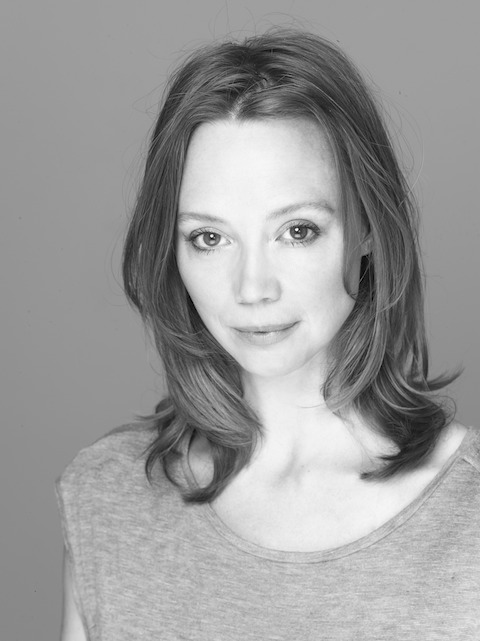
Title thesis:
Postmodernisme, verlangen en het lichaam
De autonomie van het lichaam in het postmodernisme
Subject:
The thesis is an exploration of conceptions of the body, which is split in mind and body since Cartesian thinking, and where the main role is taken over by the mind.
The research shows that particularly performance art – of which it was assumed that it would regain the original unity – increases rather than reduces dualism.
By coming to terms with the idea that desire indicates lack (Freud) and presenting desire as a creative autonomous force (Deleuze and Guattari) an opening is provided to come to terms with dualism.
Q.S. Serafijn
Link to thesis (PDF)
Intuition plays an important role
in my work. I think the importance of rationalism is exaggerated in western contemporary society and contemporary art.
To endure the " not knowing" is a key feature for development and change. The fact that we are at the same time material and immaterial beings, fascinates me, it makes us multidimensional.
Instead of an "I know" politics Anthony Huberman advocates an "I care politics" . This way the focus will move from knowing and mind to the heart. The experience of art could become more a moment of attachment than of consumption; of I Love It rather than I Get It. (Quote from thesis.)
Exposition title: Remembering things before they happen.
|
|
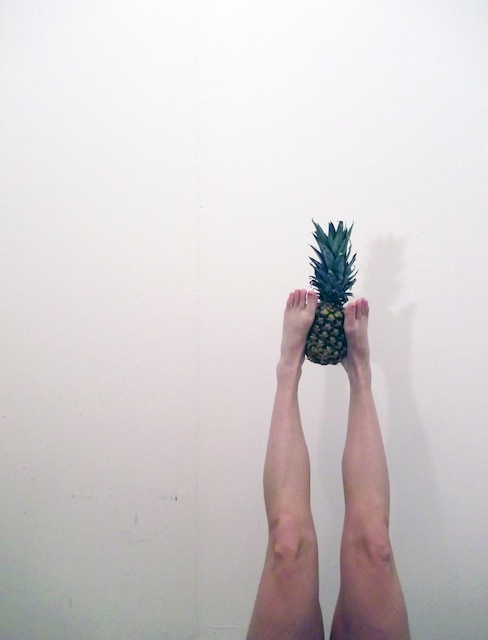 Untitled |
 Milkyway |
veravisser@gmail.com, www.veravisser.com

Title thesis:
Postmodernisme, verlangen en het lichaam
De autonomie van het lichaam in het postmodernisme
Subject:
The thesis is an exploration of conceptions of the body, which is split in mind and body since Cartesian thinking, and where the main role is taken over by the mind.
The research shows that particularly performance art – of which it was assumed that it would regain the original unity – increases rather than reduces dualism.
By coming to terms with the idea that desire indicates lack (Freud) and presenting desire as a creative autonomous force (Deleuze and Guattari) an opening is provided to come to terms with dualism.
Q.S. Serafijn
Link to thesis (PDF)
Intuition plays an important role
in my work. I think the importance of rationalism is exaggerated in western contemporary society and contemporary art.
To endure the " not knowing" is a key feature for development and change. The fact that we are at the same time material and immaterial beings, fascinates me, it makes us multidimensional.
Instead of an "I know" politics Anthony Huberman advocates an "I care politics" . This way the focus will move from knowing and mind to the heart. The experience of art could become more a moment of attachment than of consumption; of I Love It rather than I Get It. (Quote from thesis.)
Exposition title: Remembering things before they happen.
|
|
 Untitled |
 Milkyway |
Cyrilla VerkooijenCyrilla Verkooijen
C@Cyrillart.com, www.Cyrillart.com
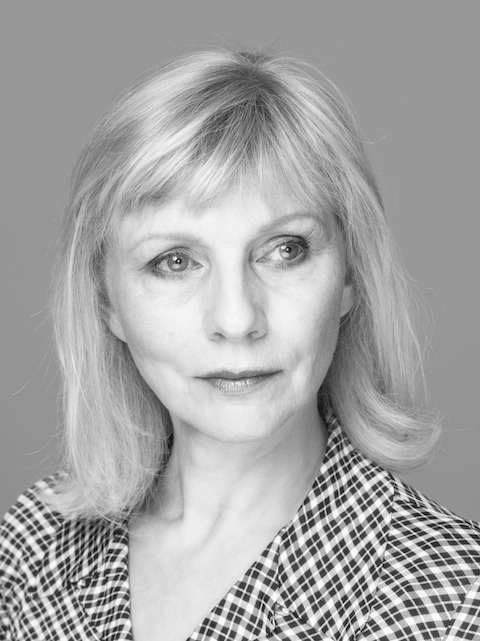
Title thesis:
A minimal layer with a maximum significance
Subject:
Powder dust.
Substance fallen apart into particles of matter. Substance which was once something or has to be anything. Substance as metamorphosis.
A connotation is attached to each type of powder dust. It is the connotation that the material in itself evokes and the subjective sense that the artist gives to the material. This led to my question:
'What is the meaning in the artwork, of a specific layer of dust on the floor of the exhibition space'. In this thesis, I analyse the meaning of works by four artists who particularly worked with powdery substances. These are Yves Klein, Wolfgang Laib, Karla Black and Anish Kapoor.
Link to thesis (PDF)
Cyrilla Verkooijen lives and works in Amsterdam.
She started out at the Maastricht Academy of Fine Arts, followed
by a study of 'Cultural and Social Development' in Amsterdam. After working several years in that field, she decided to return to the study of arts. She completed her (part- time program) study of fine art
at the Gerrit Rietveld Academy in Amsterdam in 2013.
"My work consists mainly of spatial sculptures, installations, and objects combined with video techniques.
To this end I use a large variety of materials;
Mostly I select them for their aesthetic and fragile appeal. Powdery materials attract me in particular, especially powders
that are derived from rural and/or agricultural growths. In a way I draw nature indoors and create my own landscape type formations.
Often I let myself being guided by the characteristics of different
materials made available to me. Then color plains and drawings come into focus in what often wind up being three dimensional abstract images.
Almost consequently most installations of mine are temporary as is the transience of natural materials and in the end my very own mortality".
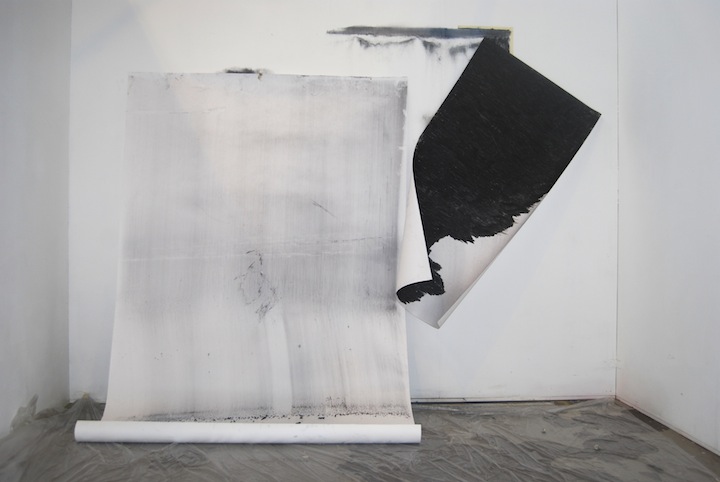 Charcoal drawing in progress |
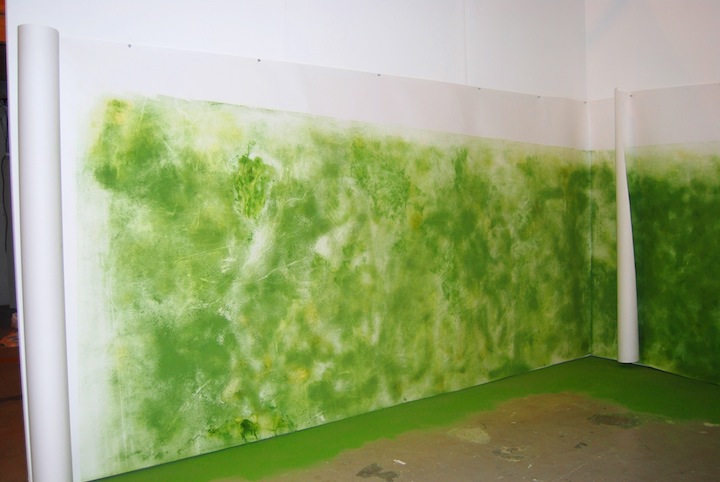 Grass and Paper |
|
|
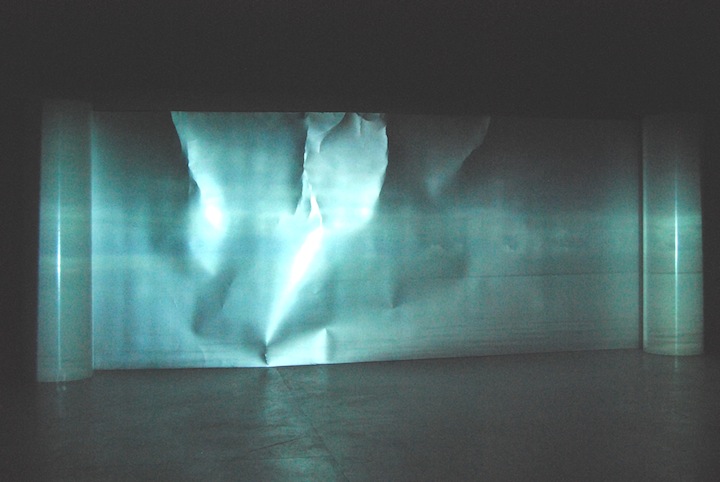 IJsselmeer |
C@Cyrillart.com, www.Cyrillart.com

Title thesis:
A minimal layer with a maximum significance
Subject:
Powder dust.
Substance fallen apart into particles of matter. Substance which was once something or has to be anything. Substance as metamorphosis.
A connotation is attached to each type of powder dust. It is the connotation that the material in itself evokes and the subjective sense that the artist gives to the material. This led to my question:
'What is the meaning in the artwork, of a specific layer of dust on the floor of the exhibition space'. In this thesis, I analyse the meaning of works by four artists who particularly worked with powdery substances. These are Yves Klein, Wolfgang Laib, Karla Black and Anish Kapoor.
Link to thesis (PDF)
Cyrilla Verkooijen lives and works in Amsterdam.
She started out at the Maastricht Academy of Fine Arts, followed
by a study of 'Cultural and Social Development' in Amsterdam. After working several years in that field, she decided to return to the study of arts. She completed her (part- time program) study of fine art
at the Gerrit Rietveld Academy in Amsterdam in 2013.
"My work consists mainly of spatial sculptures, installations, and objects combined with video techniques.
To this end I use a large variety of materials;
Mostly I select them for their aesthetic and fragile appeal. Powdery materials attract me in particular, especially powders
that are derived from rural and/or agricultural growths. In a way I draw nature indoors and create my own landscape type formations.
Often I let myself being guided by the characteristics of different
materials made available to me. Then color plains and drawings come into focus in what often wind up being three dimensional abstract images.
Almost consequently most installations of mine are temporary as is the transience of natural materials and in the end my very own mortality".
 Charcoal drawing in progress |
 Grass and Paper |
|
|
 IJsselmeer |
Inge ThoesInge Thoes
inge.thoes@gmail.com, www.ingethoes.com

Title thesis:
Anders Breivik versus Rat en Beer
Oorlog en Kunst in het Nieuwe Wotan Tijdperk
Subject:
If there are parallel worlds and we are able to switch between them, why do some people still prefer 'only' one world? With what symbols do they anchor themselves in their chosen semi-autonomous domain? And to what extend are we willing to question our own worldviews? These are questions that Inge Thoes raises in her thesis.
On the one hand she shows us the frozen, immobile world of Anders Breivik, who freed himself from his teeth-grinding universe and reinvented himself as a superman who fights for his own idea of freedom. On the other hand she presents to us the mumbling universe of Rat and Bear who incessantly explore, interrogate and investigate the way they view the world. Illogical but without prejudice. The archaic legacy of Jung holds the worlds that are discussed in this paper together.
Q.S. Serafijn, 30/01/2013
Link to thesis (PDF)
Palm tree on a white sandy beach. Room with a dead end.
Ping-pong table. Draughtsman Drawing a Recumbent Woman.
Still life with fruit. Hardcore gabber music.
Rocket ice cream. The hooded man in Abu Graib.
Call for revolution. Confetti bomb. Anders Breivik. Rat and Bear.
In my work I look for combinations of objects, materials and
pictures that call for unexpected contradictions. The tension between the stupid on the one hand and the political to the other for example, or between magic and hard edge.
Clichéd and iconic images are an important source for my art. I try to decompose the appeal of these pictures and research how their meaning can change depending on the context.
 Where is the canary? Installation |
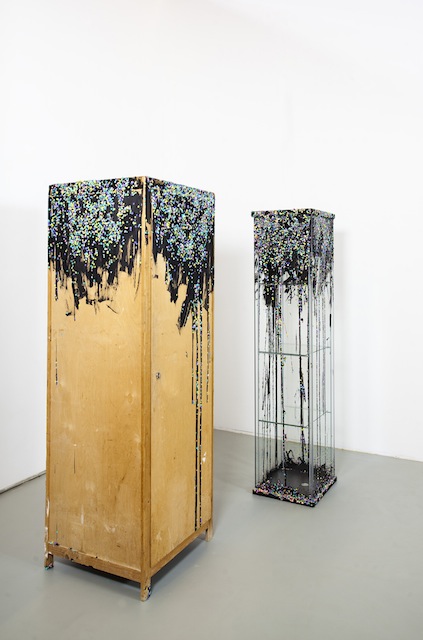 The Face of the Deep, Installation |
 Superstition Mountains (working title), installation |
inge.thoes@gmail.com, www.ingethoes.com

Title thesis:
Anders Breivik versus Rat en Beer
Oorlog en Kunst in het Nieuwe Wotan Tijdperk
Subject:
If there are parallel worlds and we are able to switch between them, why do some people still prefer 'only' one world? With what symbols do they anchor themselves in their chosen semi-autonomous domain? And to what extend are we willing to question our own worldviews? These are questions that Inge Thoes raises in her thesis.
On the one hand she shows us the frozen, immobile world of Anders Breivik, who freed himself from his teeth-grinding universe and reinvented himself as a superman who fights for his own idea of freedom. On the other hand she presents to us the mumbling universe of Rat and Bear who incessantly explore, interrogate and investigate the way they view the world. Illogical but without prejudice. The archaic legacy of Jung holds the worlds that are discussed in this paper together.
Q.S. Serafijn, 30/01/2013
Link to thesis (PDF)
Palm tree on a white sandy beach. Room with a dead end.
Ping-pong table. Draughtsman Drawing a Recumbent Woman.
Still life with fruit. Hardcore gabber music.
Rocket ice cream. The hooded man in Abu Graib.
Call for revolution. Confetti bomb. Anders Breivik. Rat and Bear.
In my work I look for combinations of objects, materials and
pictures that call for unexpected contradictions. The tension between the stupid on the one hand and the political to the other for example, or between magic and hard edge.
Clichéd and iconic images are an important source for my art. I try to decompose the appeal of these pictures and research how their meaning can change depending on the context.
 Where is the canary? Installation |
 The Face of the Deep, Installation |
 Superstition Mountains (working title), installation |
Martien SuijkerbuijkMartien Suijkerbuijk
info@martiensuijkerbuijk.nl

Title thesis:
An historical analysis of object and culture
Subject:
The thesis is an attempt to analyze the objective world and its complications in culture. Often with a dialectical-materialist method and sometimes very speculative. Marx’s theory of alienation and Hannah Arendt’s concept of Homo Faber are an important guidance throughout the thesis. The process with its conclusions is structured in a historical context to regain a conscious mind toward the development of the object and its discontents. It is not presented in a chronological order but instead has two different timelines that intersect at a certain point. One timeline is from the perspective of production and the other of consumption. In the end I try to employ an Object Oriented Ontological approach to formulate new questions regarding objects.
A hole in the floor becomes a space, becomes a story Building walls,
not for the ceiling, but to parallel spaces. Pieces of wood turned into shapes of the imagination, in space and object. To work is not to think, to build is to understand. A man must eat, create and continue. The worker and the thinker, a builder and a baker. A wall becomes a road, becomes a car.
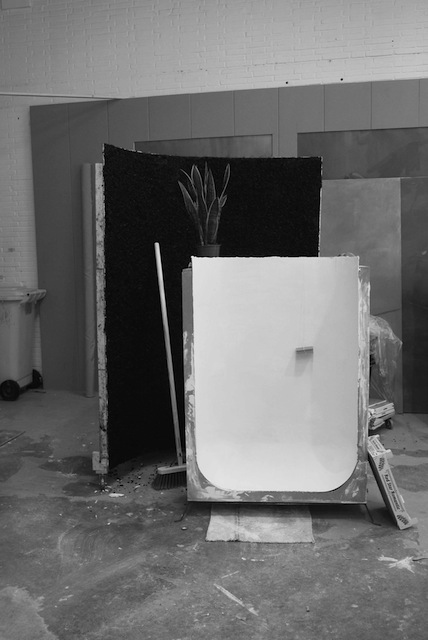 In his long breaks he took special delight in building things of his imagination that were good for nothing |
|
|
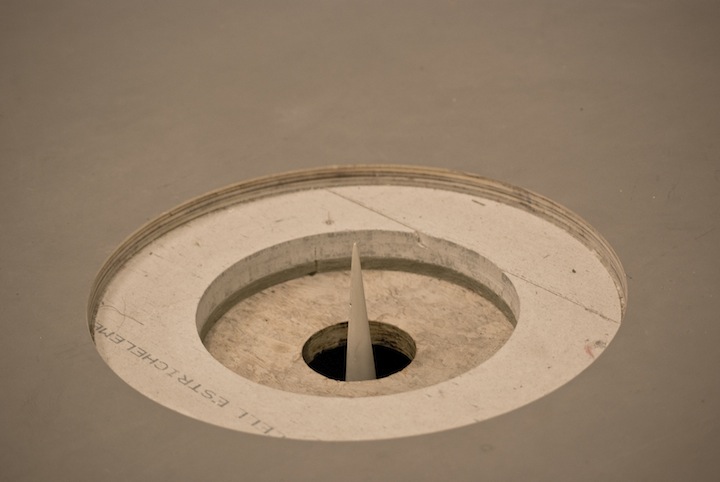 A hole in the floor becomes a space becomes a building (detail) |
info@martiensuijkerbuijk.nl

Title thesis:
An historical analysis of object and culture
Subject:
The thesis is an attempt to analyze the objective world and its complications in culture. Often with a dialectical-materialist method and sometimes very speculative. Marx’s theory of alienation and Hannah Arendt’s concept of Homo Faber are an important guidance throughout the thesis. The process with its conclusions is structured in a historical context to regain a conscious mind toward the development of the object and its discontents. It is not presented in a chronological order but instead has two different timelines that intersect at a certain point. One timeline is from the perspective of production and the other of consumption. In the end I try to employ an Object Oriented Ontological approach to formulate new questions regarding objects.
A hole in the floor becomes a space, becomes a story Building walls,
not for the ceiling, but to parallel spaces. Pieces of wood turned into shapes of the imagination, in space and object. To work is not to think, to build is to understand. A man must eat, create and continue. The worker and the thinker, a builder and a baker. A wall becomes a road, becomes a car.
 In his long breaks he took special delight in building things of his imagination that were good for nothing |
|
|
 A hole in the floor becomes a space becomes a building (detail) |
Merel SchoutendorpMerel Schoutendorp
merlemerlo@hotmail.com, www.schoutendorp.nl
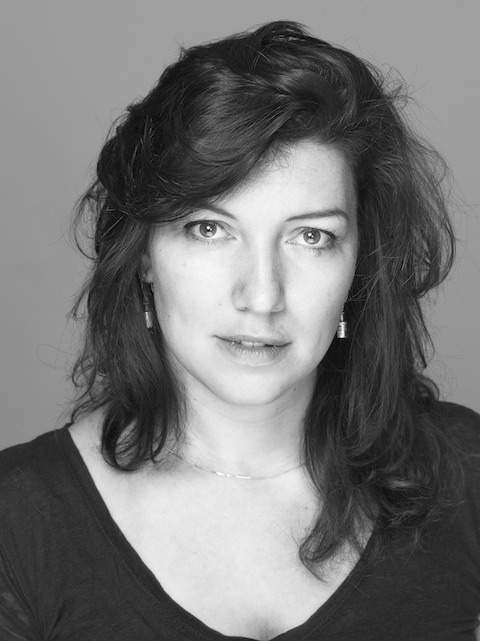
Title thesis:
To make the stone more stony
Subject:
The images around us; internet, magazines and the billboards on the streets change our way of seeing the world. But images and experiences can not be seen separately. Painting and gaming is not only physical because we use our body, it is near to us because it involves our unconscious being.
'Living unconsciously, doing things automatically, forgetting if you had done it or not, it’s as if such lives have never been.' And such is the purpose of art: to stop us from living in a void, to make us conscious about the details, to keep our faculties always in motion by making the familiar unfamiliar.
Link to thesis (PDF)
Generally I capture impressions of a first-person video game. Video images from unknown places. I wonder why I want to walk into the screen. The absorbing landscapes and the physicality of the game challenge me to look differently
at my painting. The figures are in action. The environment is a
stage scenery, put there to tell the story. Colour, form and movement define the mood. Sometimes the characters disappear and only background remains. What are these elements of a stage scenery? I combine my game scenes with a Mexican experience, from that a new world evolves.
|
|
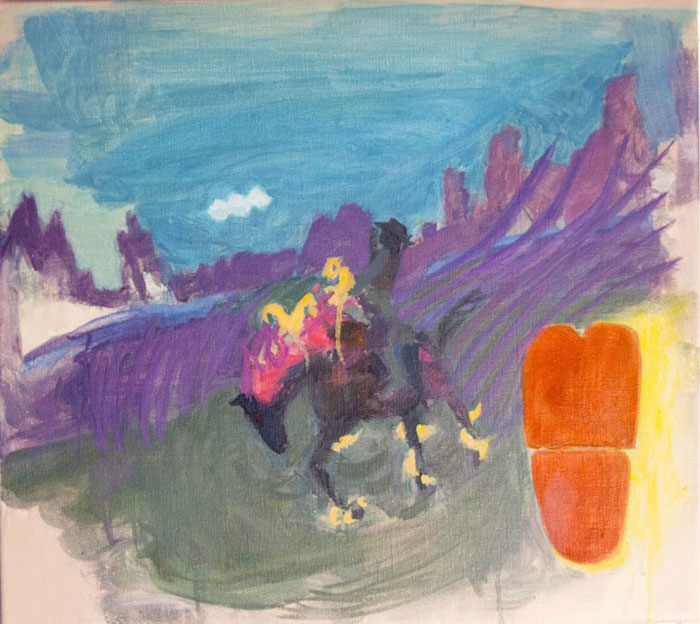 El caballo negro oil and acrylic on canvas 45×50 cm 2013 |
merlemerlo@hotmail.com, www.schoutendorp.nl

Title thesis:
To make the stone more stony
Subject:
The images around us; internet, magazines and the billboards on the streets change our way of seeing the world. But images and experiences can not be seen separately. Painting and gaming is not only physical because we use our body, it is near to us because it involves our unconscious being.
'Living unconsciously, doing things automatically, forgetting if you had done it or not, it’s as if such lives have never been.' And such is the purpose of art: to stop us from living in a void, to make us conscious about the details, to keep our faculties always in motion by making the familiar unfamiliar.
Link to thesis (PDF)
Generally I capture impressions of a first-person video game. Video images from unknown places. I wonder why I want to walk into the screen. The absorbing landscapes and the physicality of the game challenge me to look differently
at my painting. The figures are in action. The environment is a
stage scenery, put there to tell the story. Colour, form and movement define the mood. Sometimes the characters disappear and only background remains. What are these elements of a stage scenery? I combine my game scenes with a Mexican experience, from that a new world evolves.
|
|
 El caballo negro oil and acrylic on canvas 45×50 cm 2013 |
Dina RoussouDina Roussou
konroussou@gmail.com

Title thesis:
Mrs & Mr Motley and other myths [ ]
Melancholy as a genuine force in contemporary Art
Subject:
'Melancholy is a genuine force in contemporary art; not as a depressive state, but rather as a state that embraces poetics and surreal situations within reality. Its powerful introspection has a deep knowledge of the wealth gained through experience. It is fact that in the current socio-political and cultural whirlpool, there seems a peremptory need to once again create and reform terms.
In which ways does the shape of experience and identity of the melancholic artist, under a certain political and social regime, manage to reform terms and conditions? How does the paradox of melancholy form revolution? Which are the crucial aspects of the paradox within the modern context of postwar capitalism? How does an individual state become part of the collective and what is the pivotal role of melancholy in culture and art in particular?'
Link to thesis (PDF)
In my art practice I reflect upon human existence and experience
in relation to form and space. Through the tensions between reality, perception and illusion, I aim to address certain questions; to trigger the sensual part of existance. Rhizomatic philosophical concept influences my thoughts represented into video and spatial installations.
A body of work consisted of sculptures, videos and performance as actions and suggestions of a
state-of-being in an open dialogue. Employing composition, form and colours within space and time,
the questioning journey of the semantics of existence within structure(s) begins.
My latest work engages colour
and light to sculpture space as an assumption of objective reality within a psychological context. How do we experience physicality? What happens on the boundaries of existance?.
![[EXIT]1-](http://dogtime.org/wp-content/uploads/2013/06/EXIT1-.jpg) Exit 1 |
![[EXIT]2-](http://dogtime.org/wp-content/uploads/2013/06/EXIT2-.jpg) Exit 2 |
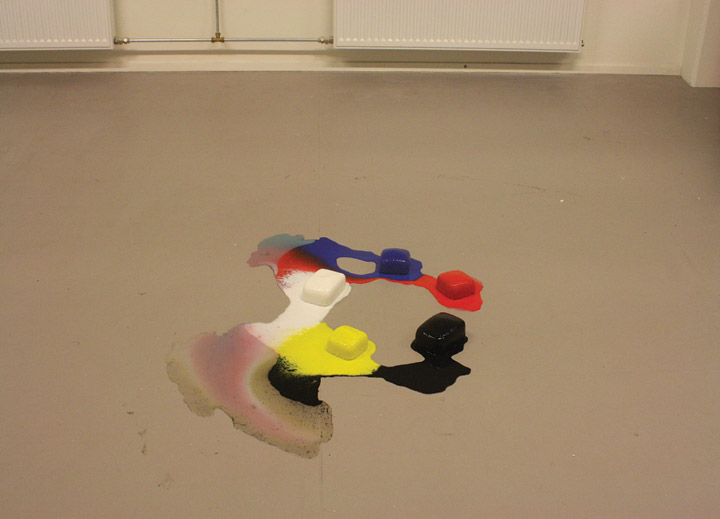 Untitled |
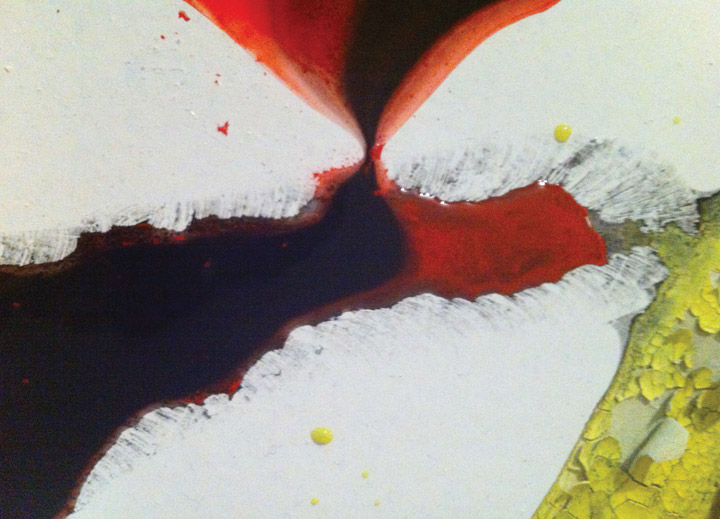 Untitled (detail) |
konroussou@gmail.com

Title thesis:
Mrs & Mr Motley and other myths [ ]
Melancholy as a genuine force in contemporary Art
Subject:
'Melancholy is a genuine force in contemporary art; not as a depressive state, but rather as a state that embraces poetics and surreal situations within reality. Its powerful introspection has a deep knowledge of the wealth gained through experience. It is fact that in the current socio-political and cultural whirlpool, there seems a peremptory need to once again create and reform terms.
In which ways does the shape of experience and identity of the melancholic artist, under a certain political and social regime, manage to reform terms and conditions? How does the paradox of melancholy form revolution? Which are the crucial aspects of the paradox within the modern context of postwar capitalism? How does an individual state become part of the collective and what is the pivotal role of melancholy in culture and art in particular?'
Link to thesis (PDF)
In my art practice I reflect upon human existence and experience
in relation to form and space. Through the tensions between reality, perception and illusion, I aim to address certain questions; to trigger the sensual part of existance. Rhizomatic philosophical concept influences my thoughts represented into video and spatial installations.
A body of work consisted of sculptures, videos and performance as actions and suggestions of a
state-of-being in an open dialogue. Employing composition, form and colours within space and time,
the questioning journey of the semantics of existence within structure(s) begins.
My latest work engages colour
and light to sculpture space as an assumption of objective reality within a psychological context. How do we experience physicality? What happens on the boundaries of existance?.
![[EXIT]1-](http://dogtime.org/wp-content/uploads/2013/06/EXIT1-.jpg) Exit 1 |
![[EXIT]2-](http://dogtime.org/wp-content/uploads/2013/06/EXIT2-.jpg) Exit 2 |
 Untitled |
 Untitled (detail) |
Carlos van der PuttenCarlos van der Putten
info@carlosvanderputten.nl, www.carlosvanderputten.nl

Title thesis:
De Essentie
Subject:
I believe that every talent, even if seemingly totally unrelated, complements another talent. Every field of work has its secrets, its way of thinking and methods of finding solutions. Software engineers are taught to analyse the problem within a process, and write code to solve it. This way of thinking can also be applied to other fields of work. I believe a mathematician, for example, who is also an artist will be able see and create certain qualities in art which other people cannot.
The mantis shrimp is one of the coolest animals ever. Its eyes
are famous: they have 16 colour-receptive cones in their eyes versus our 3. This means the mantis shrimp can see colours much better and see more colours.
Besides this advantage the mantis shrimp is also a great fighter.
When he unfolds his claws, they reach a speed of 23 meters per second, which is comparable to the acceleration of a bullet.
I think the mantis shrimp would be a great artist.
|
|
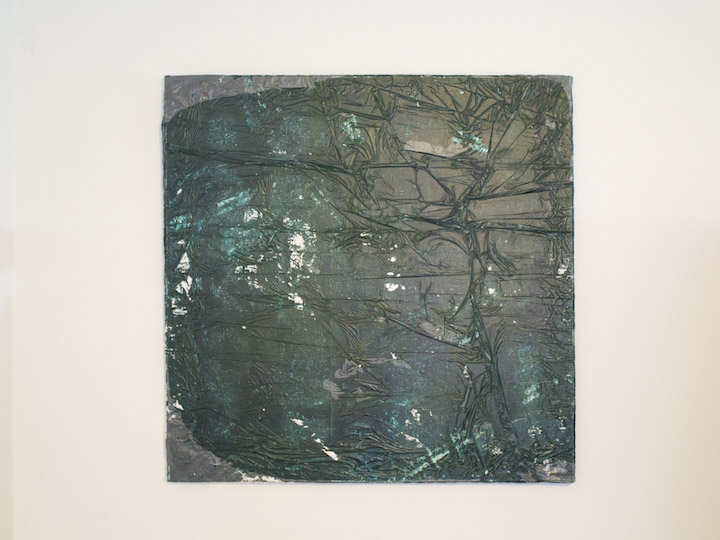 De Bunker |
 Used driving pole, 4m |
info@carlosvanderputten.nl, www.carlosvanderputten.nl

Title thesis:
De Essentie
Subject:
I believe that every talent, even if seemingly totally unrelated, complements another talent. Every field of work has its secrets, its way of thinking and methods of finding solutions. Software engineers are taught to analyse the problem within a process, and write code to solve it. This way of thinking can also be applied to other fields of work. I believe a mathematician, for example, who is also an artist will be able see and create certain qualities in art which other people cannot.
The mantis shrimp is one of the coolest animals ever. Its eyes
are famous: they have 16 colour-receptive cones in their eyes versus our 3. This means the mantis shrimp can see colours much better and see more colours.
Besides this advantage the mantis shrimp is also a great fighter.
When he unfolds his claws, they reach a speed of 23 meters per second, which is comparable to the acceleration of a bullet.
I think the mantis shrimp would be a great artist.
|
|
 De Bunker |
 Used driving pole, 4m |
Hester KuisHester Kuis
hekuis@hotmail.com
Title thesis:
'Who is in control?'
Subject:
'I find an artwork interesting if I can feel and see a tension between the form and the content of an artwork. How do artists cope with the tension they deliberately provoke on the one hand, and wish to control on the other hand? With this perspective I have selected three artists. In my thesis I have described, explained and clarified their works with the disciplines psychology, psychoanalysis and philosophy.'
'As an artist I, Hester Kuis, am driven to visualise my own psychological process on daily life activities and pre-occupations. Certain behaviours or thoughts, sometimes with no specific relevance, get my attention due to their bias and lack of nuance. This motivates me to investigate these biases in a more differentiated way. By researching the extremes and emphasising oppositions in a balanced way, a new playfield comes into existence. This allows me to find out what my emotional state of mind is. By translating my reflection of my research into an artwork, I give the viewer the opportunity to experience his or her own thoughts and feelings as well'.
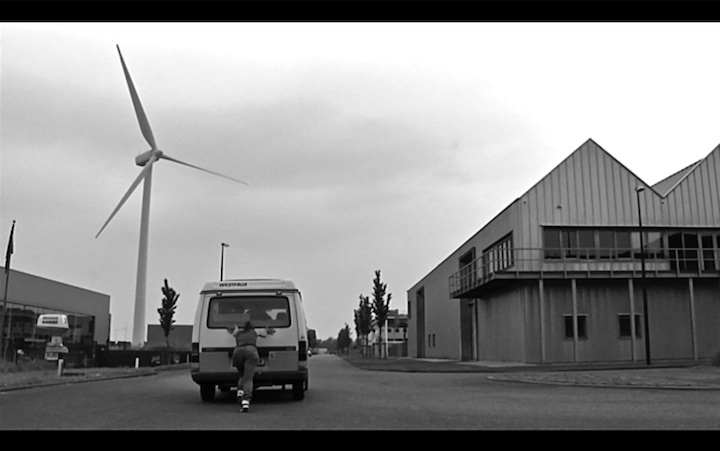 Untitled (Video) |
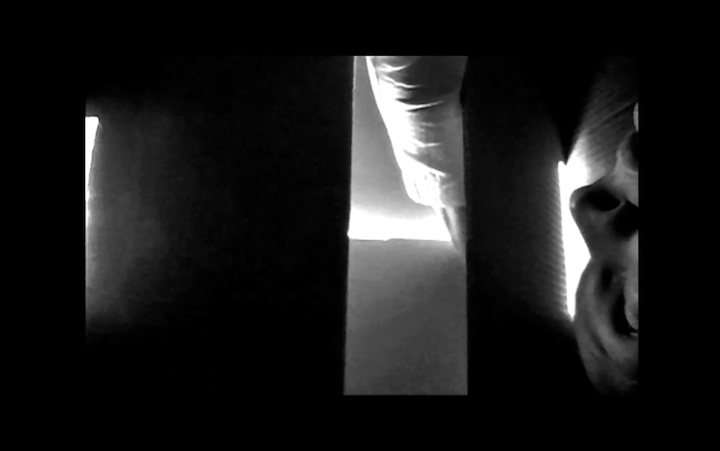 Untitled (Video) |
 Untitled (Video) |
hekuis@hotmail.com
Title thesis:
'Who is in control?'
Subject:
'I find an artwork interesting if I can feel and see a tension between the form and the content of an artwork. How do artists cope with the tension they deliberately provoke on the one hand, and wish to control on the other hand? With this perspective I have selected three artists. In my thesis I have described, explained and clarified their works with the disciplines psychology, psychoanalysis and philosophy.'
'As an artist I, Hester Kuis, am driven to visualise my own psychological process on daily life activities and pre-occupations. Certain behaviours or thoughts, sometimes with no specific relevance, get my attention due to their bias and lack of nuance. This motivates me to investigate these biases in a more differentiated way. By researching the extremes and emphasising oppositions in a balanced way, a new playfield comes into existence. This allows me to find out what my emotional state of mind is. By translating my reflection of my research into an artwork, I give the viewer the opportunity to experience his or her own thoughts and feelings as well'.
 Untitled (Video) |
 Untitled (Video) |
 Untitled (Video) |
Asia KomarovaAsia Komarova
asiakomarova@gmail.com, www.asiakomarova.com
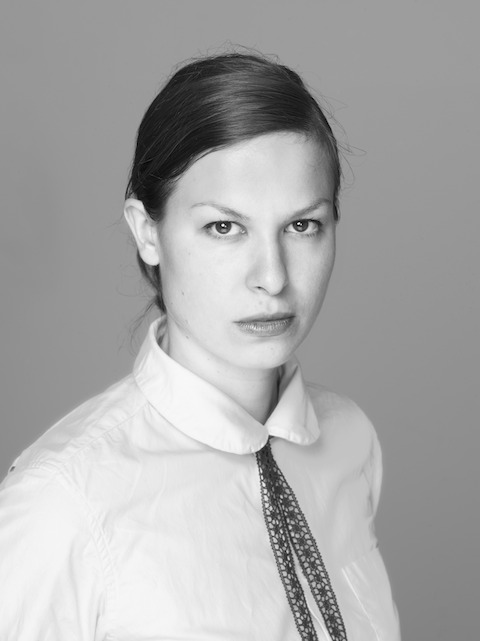
Title thesis:
I am not a genius declaring that contemporary art is a product of Western society. A product, a relevant idea and a cultural movement and so to say a historical event of the West.
Approaching contemporary art as a historical event facilitates us the visualisation of it in a chronological order. We can see an origin and probably an end. The challenge lies in accepting that we live in the time of the end. As a ‘post-apocalyptic survivor’ I have the privilege to fantasise about the future, where this category of art has exhausted itself and we step into a new era.
The subjects I want to focus on in this text are: how long are we still going to experiment inside the ‘white cubes’? When Westerns are asking for change; how does art respond to it ? Do we, the producers, have a plan B ?
Link to thesis (PDF)
Drifting from the practice of street art, today I keep using the same strategic approach when it comes to producing. As a consequence the main subject of my work comes to the limitations of what is and what is not allowed in society, and what humans allow themselves to be. Therefore my public represents any passers-by, and my material and tools are their indifference. The triangle of the artwork, the artist and the public, exposes unexpected and non-negotiable happenings.
The starting point for my work is any social ‘gap’ that allows for
exploration, investigation and interpretation. Consequently the decisions I make when developing projects are strictly dependant on the situation, and the process has more relevance than the end result or the media.
At first appearance my artwork has a critical quality, and secondly it gives solutions to problems.
My goal is to not reduce myself
to a critique, but to be pragmatic and shape new movements. As a human-being I choose to do not
to dream, and as an artist I aim to make dreams come true.
|
|
|
|
|
|
asiakomarova@gmail.com, www.asiakomarova.com

Title thesis:
I am not a genius declaring that contemporary art is a product of Western society. A product, a relevant idea and a cultural movement and so to say a historical event of the West.
Approaching contemporary art as a historical event facilitates us the visualisation of it in a chronological order. We can see an origin and probably an end. The challenge lies in accepting that we live in the time of the end. As a ‘post-apocalyptic survivor’ I have the privilege to fantasise about the future, where this category of art has exhausted itself and we step into a new era.
The subjects I want to focus on in this text are: how long are we still going to experiment inside the ‘white cubes’? When Westerns are asking for change; how does art respond to it ? Do we, the producers, have a plan B ?
Link to thesis (PDF)
Drifting from the practice of street art, today I keep using the same strategic approach when it comes to producing. As a consequence the main subject of my work comes to the limitations of what is and what is not allowed in society, and what humans allow themselves to be. Therefore my public represents any passers-by, and my material and tools are their indifference. The triangle of the artwork, the artist and the public, exposes unexpected and non-negotiable happenings.
The starting point for my work is any social ‘gap’ that allows for
exploration, investigation and interpretation. Consequently the decisions I make when developing projects are strictly dependant on the situation, and the process has more relevance than the end result or the media.
At first appearance my artwork has a critical quality, and secondly it gives solutions to problems.
My goal is to not reduce myself
to a critique, but to be pragmatic and shape new movements. As a human-being I choose to do not
to dream, and as an artist I aim to make dreams come true.
|
|
|
|
|
|
Nil IlkbasaranNil Ilkbasaran
nil.ilkbasaran@gmail.com, www.nililkbasaran.com
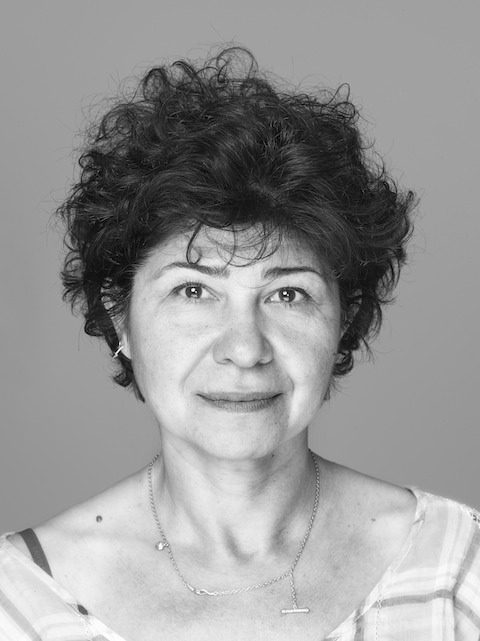
Title thesis:
Spaces As Installations
Exploring its characteristics and potencies
Subject:
The research starts off with a fascination on empty architectural spaces that are intact but not in function and explores this as a form of art. It examines the practices in Spaces as Installations since 1970’s under four topics: The objecthood, the materiality, the site specificity and the potencies. The emphasis of the research lies in the conceptual use of the space, yet always with a reference to physical, experiential and social awareness through the body.
Questioning what is taken for granted, and breaking the formal order of things is the essence of the work of Nil Ilkbasaran. Architectural empty spaces and their materiality function are her medium. She makes interventions to destabilise these spaces, preferably by utilising their pre-existing materials. Her work evokes annoyance as well
as visual attractiveness and
seeks heterotopias, juxtaposing
incompatible spaces in one. Although conceptual by nature, her work manifests itself as a physical, bodily experience for the viewer. She applies the visual research not only in her spatial interventions, but also in her photography.
Nil Ilkbasaran, born in Istanbul Turkey, lives and works in Amsterdam, Netherlands
|
|
|
This work is made possible with the collaboration of the Gerrit Rietveld Academie. |
|
|
nil.ilkbasaran@gmail.com, www.nililkbasaran.com

Title thesis:
Spaces As Installations
Exploring its characteristics and potencies
Subject:
The research starts off with a fascination on empty architectural spaces that are intact but not in function and explores this as a form of art. It examines the practices in Spaces as Installations since 1970’s under four topics: The objecthood, the materiality, the site specificity and the potencies. The emphasis of the research lies in the conceptual use of the space, yet always with a reference to physical, experiential and social awareness through the body.
Questioning what is taken for granted, and breaking the formal order of things is the essence of the work of Nil Ilkbasaran. Architectural empty spaces and their materiality function are her medium. She makes interventions to destabilise these spaces, preferably by utilising their pre-existing materials. Her work evokes annoyance as well
as visual attractiveness and
seeks heterotopias, juxtaposing
incompatible spaces in one. Although conceptual by nature, her work manifests itself as a physical, bodily experience for the viewer. She applies the visual research not only in her spatial interventions, but also in her photography.
Nil Ilkbasaran, born in Istanbul Turkey, lives and works in Amsterdam, Netherlands
|
|
|
This work is made possible with the collaboration of the Gerrit Rietveld Academie. |
|
|
Nathalie Ho-Kang-YouNathalie Ho-Kang-You

Title thesis:
NARCISSUS PHANTOM
AMONOLOGUE INTÉRIEUR
Subject:
Painting is like a dance for me, a ritual for the soul, the Narcissus. In the Phantom-experience the stream of mind is complex, that what is not there seems more alive than that what is there. The Phantom-experience works like the biblical story about The Golden Calf. In the absence of something, a person, an object, an idea, it is better to idealise something that does not exist.
I am what I am not, and I am not what I am
Jean Paul Sartre
Very often I ask myself: How do I see plants and nature? There is a shadow, I use yellow. There is a leaf, I paint it blue. I am astonished by a potted plant – this small island of nature – right in the middle
of my house. When I meditate, I think about skinny body parts. I look at myself and see my hand doing something. My mind starts an unconscious choreography. The results are mostly tropically coloured objects of inanimate
nature: almost dead flowers and overstretched body parts brightly exposed. At the same time I have the feeling to disappear, the paint must dissolve into an unsettled background. Memories of a distant nature are there to keep us alive! I start and end with colours. I clash; I use your desire for monumentalism to show my weakness. I judge that my art is a candy, bitter or sweet, you decide!
|
|
|
|
|
|
|
|

Title thesis:
NARCISSUS PHANTOM
AMONOLOGUE INTÉRIEUR
Subject:
Painting is like a dance for me, a ritual for the soul, the Narcissus. In the Phantom-experience the stream of mind is complex, that what is not there seems more alive than that what is there. The Phantom-experience works like the biblical story about The Golden Calf. In the absence of something, a person, an object, an idea, it is better to idealise something that does not exist.
I am what I am not, and I am not what I am
Jean Paul Sartre
Very often I ask myself: How do I see plants and nature? There is a shadow, I use yellow. There is a leaf, I paint it blue. I am astonished by a potted plant – this small island of nature – right in the middle
of my house. When I meditate, I think about skinny body parts. I look at myself and see my hand doing something. My mind starts an unconscious choreography. The results are mostly tropically coloured objects of inanimate
nature: almost dead flowers and overstretched body parts brightly exposed. At the same time I have the feeling to disappear, the paint must dissolve into an unsettled background. Memories of a distant nature are there to keep us alive! I start and end with colours. I clash; I use your desire for monumentalism to show my weakness. I judge that my art is a candy, bitter or sweet, you decide!
|
|
|
|
|
|
|
|
Maartje HinseMaartje Hinse
info@maartjehinse.nl, www.maartjehinse.nl

Title thesis:
You need chaos to give birth to a dancing star.
Subject:
The list of famous artists, performers and politicians who have ended their own lives is alarmingly high.
I wonder whether there really is a demonstrable connection between mental disorders and the creative brain.
Creative people start their creative process from intuitive perception; testing reality is an important component in the process of achieving the final result. This is completely different during a psychosis, in which a person becomes overwhelmed by their intuition and lack of reality.
According to Friedrich Nietzsche mental chaos is exactly what is needed in order to reach great heights.
"Can I take your picture?"
"No"
"Why not?"
"Because if my Mom sees the photo then she’ll cry."
"What does she know about your situation?"
"Nothing. She thinks I have a job. She doesn’t know that I’ve been sleeping rough for the last three years."
"Can I draw you instead?"
"OK."
|
|
|
|
|
|
info@maartjehinse.nl, www.maartjehinse.nl

Title thesis:
You need chaos to give birth to a dancing star.
Subject:
The list of famous artists, performers and politicians who have ended their own lives is alarmingly high.
I wonder whether there really is a demonstrable connection between mental disorders and the creative brain.
Creative people start their creative process from intuitive perception; testing reality is an important component in the process of achieving the final result. This is completely different during a psychosis, in which a person becomes overwhelmed by their intuition and lack of reality.
According to Friedrich Nietzsche mental chaos is exactly what is needed in order to reach great heights.
"Can I take your picture?"
"No"
"Why not?"
"Because if my Mom sees the photo then she’ll cry."
"What does she know about your situation?"
"Nothing. She thinks I have a job. She doesn’t know that I’ve been sleeping rough for the last three years."
"Can I draw you instead?"
"OK."
|
|
|
|
|
|
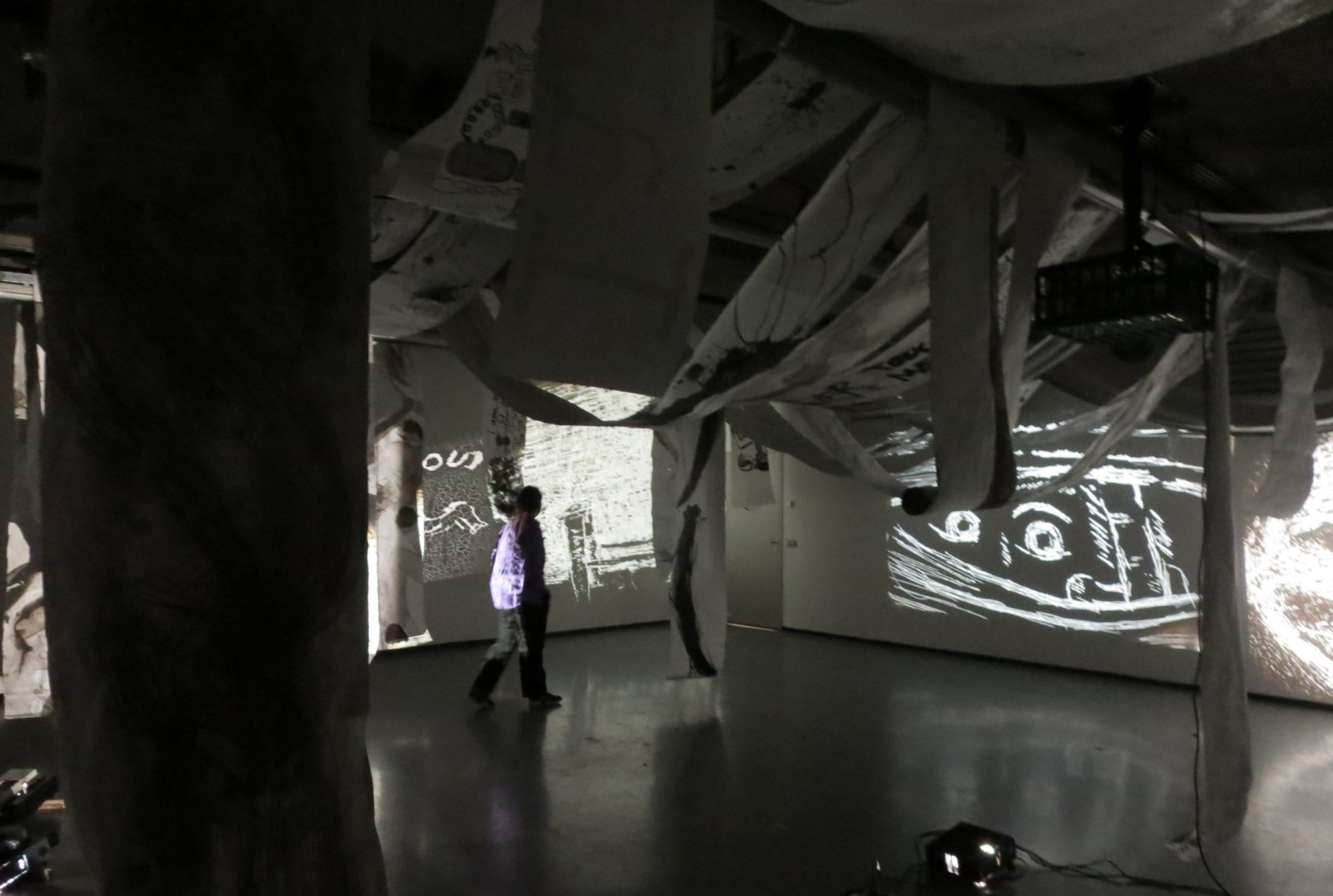
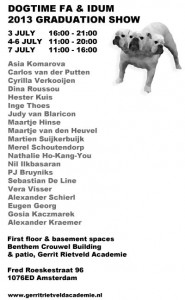

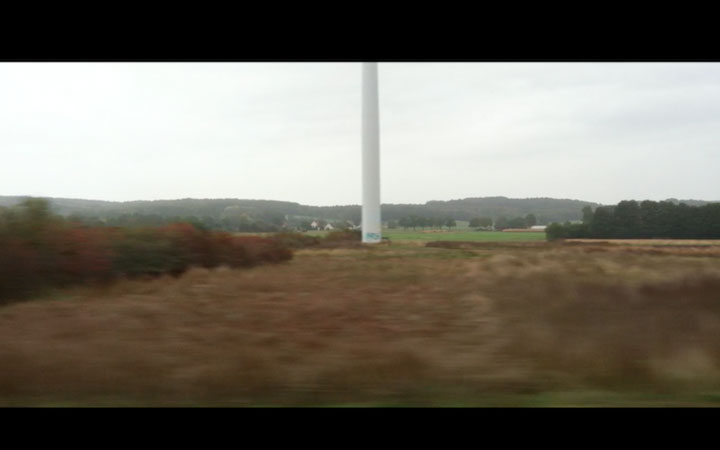


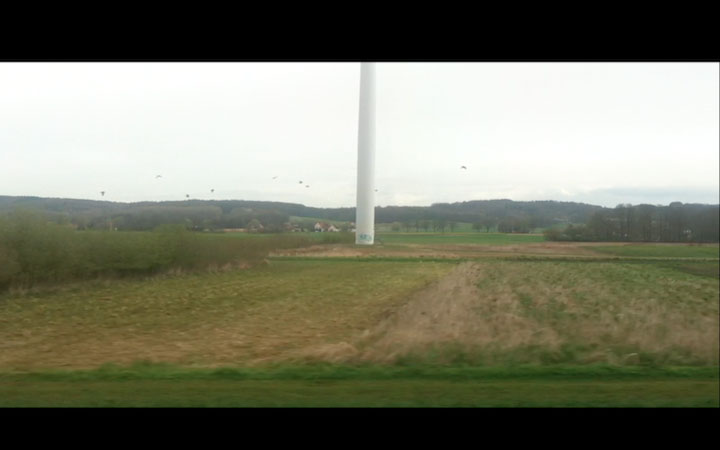
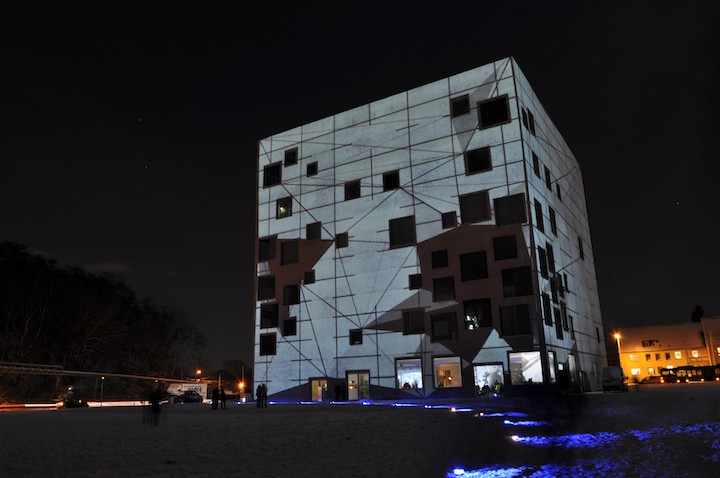
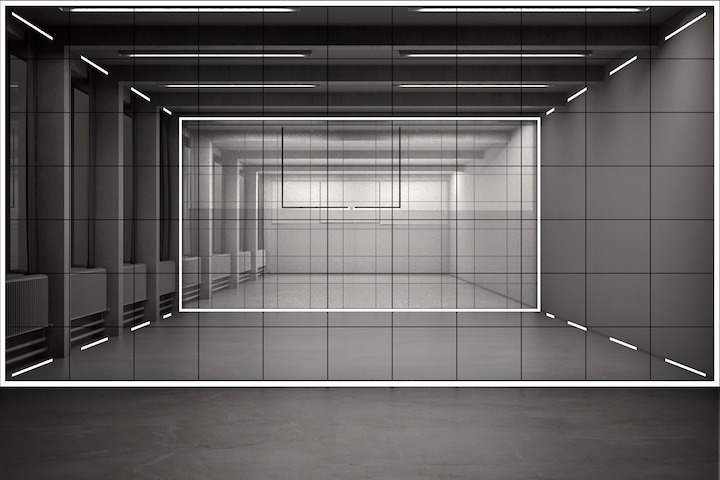
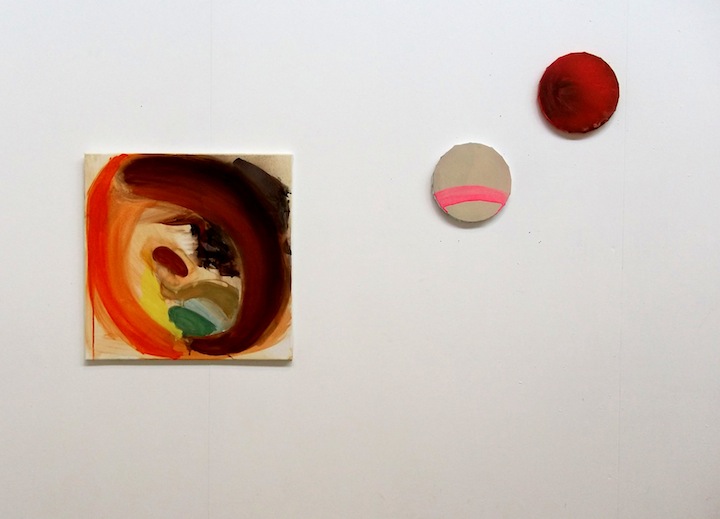
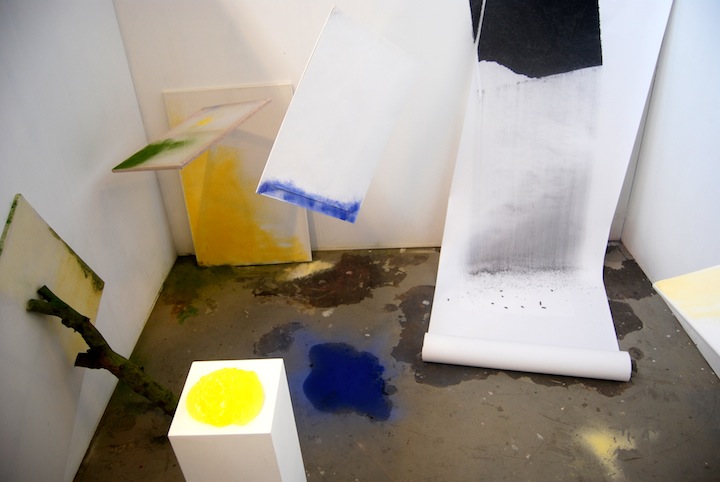
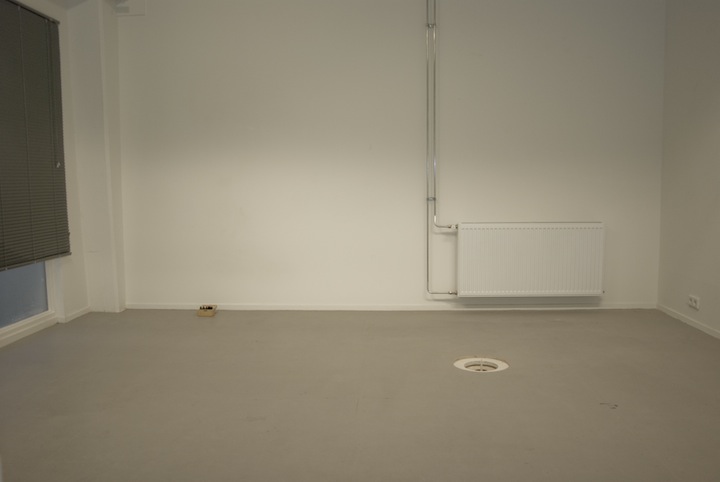

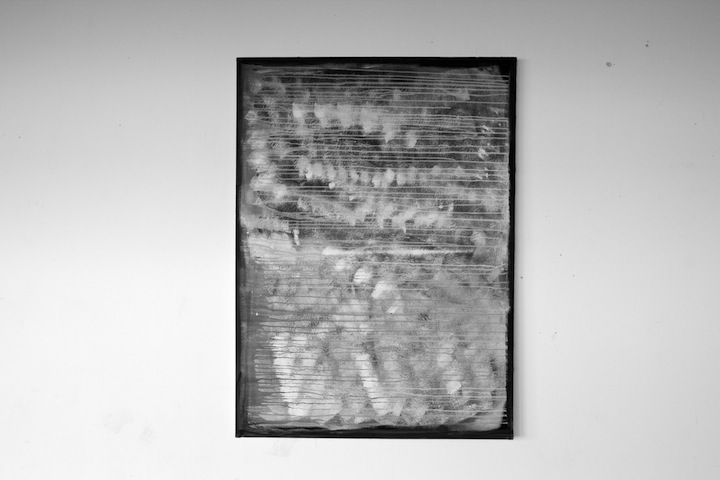
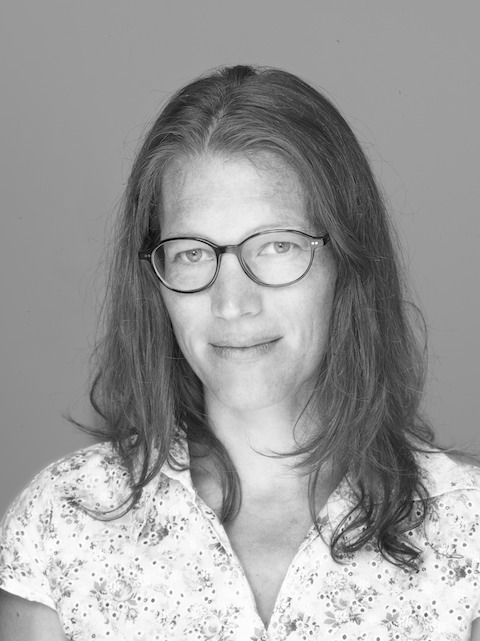
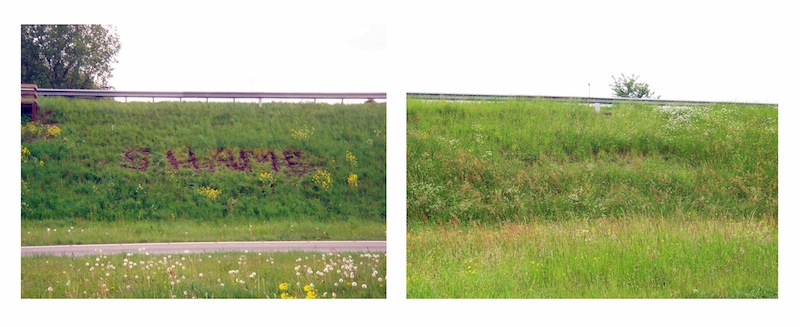

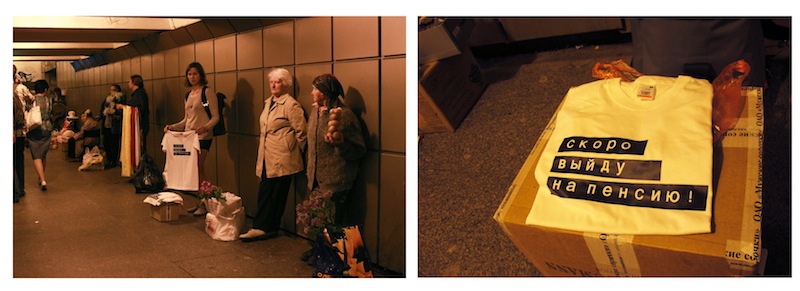

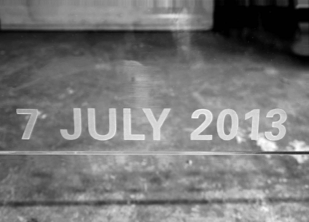
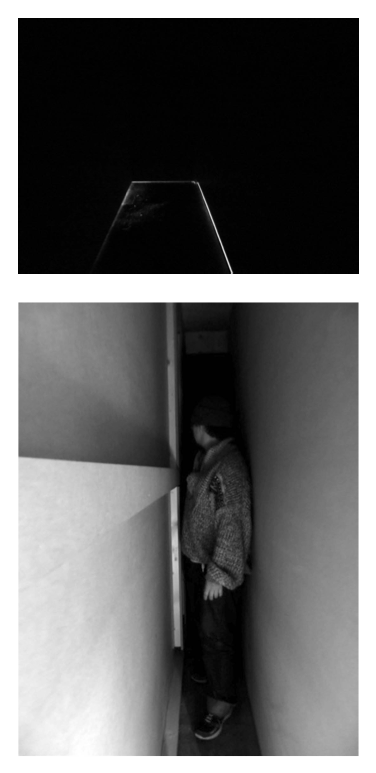
![Nathalie Ho-Kang-You Palm Tree in a Pot [oil paint 2m x 1.50m]](http://dogtime.org/wp-content/uploads/2013/06/Nathalie-Ho-Kang-You-Palm-Tree-in-a-Pot-oil-paint-2m-x-1.50m-.jpg)
![Nathalie Ho-Kang-You I want to paint an apple [oil paint 2m x 1.50m]](http://dogtime.org/wp-content/uploads/2013/06/Nathalie-Ho-Kang-You-I-want-to-paint-an-apple-oil-paint-2m-x-1.50m-.jpg)
![Nathalie Ho-Kang-You DPP Disruptive Patern Palm [oil paint 2m x 1.50m]](http://dogtime.org/wp-content/uploads/2013/06/Nathalie-Ho-Kang-You-DPP-Disruptive-Patern-Palm-oil-paint-2m-x-1.50m-.jpg)
![Nathalie Ho-Kang-You Plié [oil paint 2m x 1.50m]](http://dogtime.org/wp-content/uploads/2013/06/Nathalie-Ho-Kang-You-Plié-oil-paint-2m-x-1.50m.jpg)


